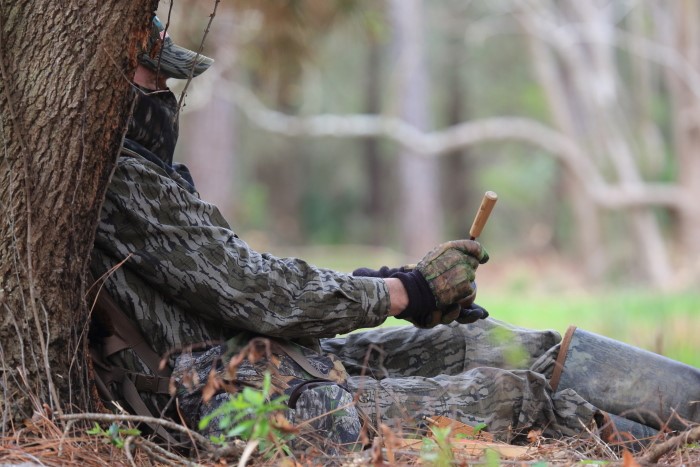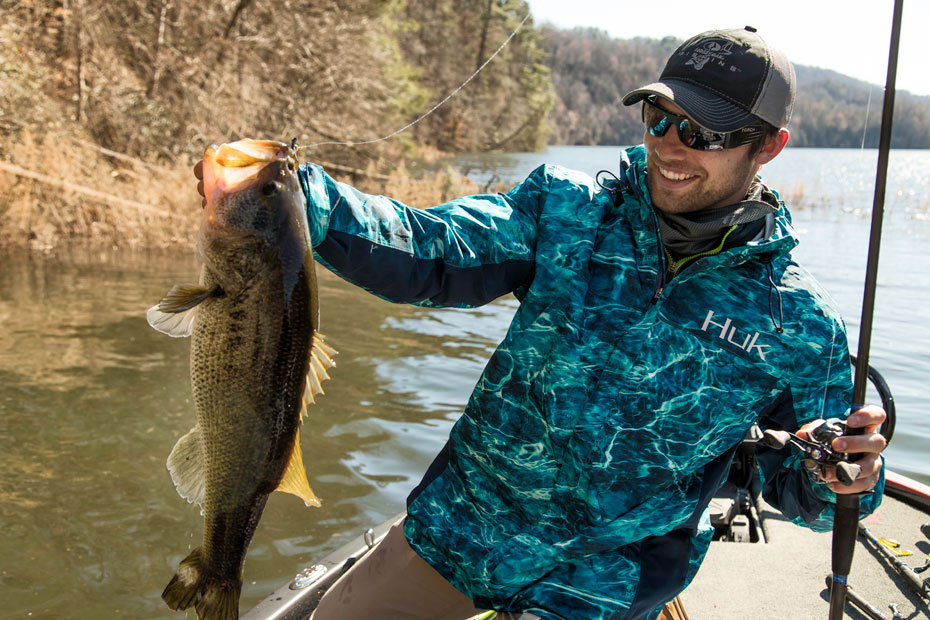Matt Van Cise from Brookville, Pennsylvania, is known as one of the nation’s leading turkey callers, and his resume proves it. He's been hunting turkeys for 27 years, and he's been competing in turkey calling contests for 23 years. He's won seven World Open Championships, five Senior Grand Nationals, two Grand National Friction Calling Championships, a World Friction Championship, three U.S. Opens, the Mid-American Open and the North American Open. If you include all the smaller calling contests, he's probably won over 100. A Mossy Oak ProStaffer since 2011, Van Cise’s two favorite Mossy Oak patterns for turkey hunting are Mossy Oak Obsession and Bottomland. He recently won the 2018 National Wild Turkey Federation (NWTF) Grand National Friction Calling Contest.
Matt Van Cise | Mossy Oak ProStaff

There are differences in all the various types of turkey calls. For instance, a diaphragm call doesn’t resonate as well at a distance as a friction call does. At a distance, in my opinion, a friction call gives the most realistic turkey call of any of the types of turkey calls that we use today. I really like the versatility of a friction call, especially a pot-type friction call. You can make the softest clucks, yelps and purrs on this call, and you can make a pot call as loud as you need it to be. You also can produce some of the most realistic turkey sounds on a pot call that you can make on any other type of turkey call.
Another advantage to the pot call is that you can make the pot call sound like multiple different turkeys. Too, you can call on different places on the call - the side of the call, half way to the middle of the call and in the middle of the call. You can use various strikers made of different woods and other substances, and each one of those strikers will sound like a different turkey. You can put various amounts of pressure on the striker and sound like a different turkey. There are many other things you can do with a pot call to change the sound until you get a gobble.
The surface of the pot call, including a slate surface, an aluminum surface, a crystal surface and a titanium surface, also changes the sound the pot call produces. But my two favorite surfaces for a pot call are aluminum and titanium. I believe those two surfaces give you a smoother and more-realistic sound than other surfaces do. These two surfaces can make any turkey call that a wild turkey can make. If I'm going to shoot the turkey, I use these two calls to locate a gobbler. But when the turkey starts to come in, I change to a diaphragm call, so I can have both my hands on my shotgun. If I'm calling for someone else to take the turkey, I’ll either have an aluminum or a titanium pot call in my hand during the entire time I'm calling to that turkey.
Many turkey hunters have been sold the idea that to be a really good turkey taker you have to use a diaphragm call. Then you always can have your hands on either your shotgun or your bow. However, as far as making a realistic turkey sound, I don’t believe you can beat a friction call.
One of the new surfaces that has come to the market in the last few years is titanium. But, titanium is becoming harder and harder to find, and that surface is extremely expensive. Right now, I'm out of titanium for building calls. I'm trying to find a place to buy more of it, but there’s no guarantee that I’m going to be able to find any more. The price for aluminum, crystal and slate calls will be about the same price, but a pot call with a titanium surface may increase by $10 or $15.
There are a variety of turkey calls that you should have in your vest, and there are a few new calls for 2018 that you may want to try out.
To see and learn more about the custom calls that Van Cise is making, go to his Facebook page at High Class Calls by Matt Van Cise, or you can go to his personal Facebook page Matt Van Cise.






























